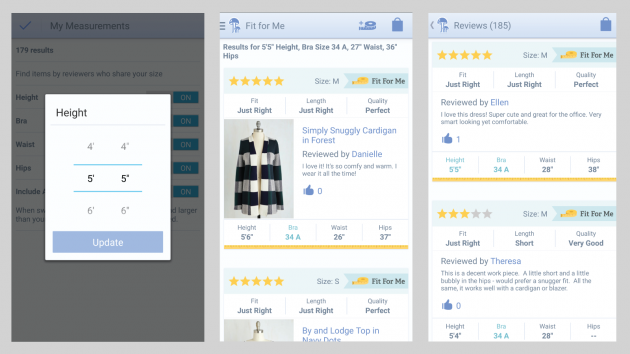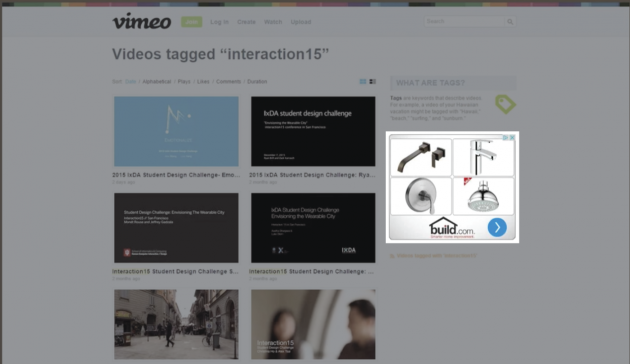4 risky personalization tactics that can make or break your CX

Personalization has been a hot topic for marketers lately, and it’s been named one of the top marketing trends for 2016. Some companies use mature, complex personalization platforms to deliver targeted web content based on fully-developed personas. Others keep a simpler approach, limiting their personalization efforts to email marketing and advertising.
The spirit of personalization is to deliver an experience that resonates with each and every customer, meets them where they’re at, and offers something they want or need. But if it's not done right, it can leave customers feeling irritated, misunderstood, or even creeped out.
Here are four personalization tactics that can strengthen a customer experience—but only if you tread carefully.
1. Using the customer’s name
We all want to be known as an individual, not a number or a “Sir or Madam.” There’s scientific evidence that some regions of the brain activate when a person hears their name, and Dale Carnegie said,
A person’s name is to that person the sweetest and most important sound in any language.
Lots of marketers have jumped on the trend of using tokens in their email subject lines to address customers by their first name, hoping that they’ll establish a warm, personal connection with the customer. But is it really effective?
There’s conflicting evidence on whether using a person’s name makes an impact in email subject lines. Hubspot found first names in subject lines tend to increase open rates, whereas Mailchimp found there was no significant difference. But there’s more at stake than just your open rates.
Why it can be dangerous
When you hear your name too much, it starts to sound insincere. You’ve probably met those folks who insert your name into every sentence in a conversation. At best, it’s uncomfortable, and at worst, it feels manipulative and suspicious.
Naturally, you’ll want to make sure not to overuse the customer’s name in marketing materials. But here’s the catch: your customer is probably getting bombarded with lots of other personalized marketing messages, which means they’re seeing their own name a lot on any given day. It can start to wear out.
For example, you’ve probably got a couple of emails like this one sitting in your inbox:
![]()
While you might be careful to only use the customer’s name an appropriate number of times, you’re not the only marketer using this tactic—which means you can’t rely on first name tokens alone to get the customer’s attention.
And it can be embarrassing if it’s not implemented correctly:

Tips for getting it right
First names are best used for getting attention and addressing the customer—not just for the sake of squeezing it in there. When you’re considering including a first name token, do a gut check: Does this sound like a greeting, or does it sound like manipulation?
Using the customer’s name can be particularly helpful in transactions. If a customer has spent money with you (especially if they’ve entered their name into a form), then it feels appropriate and respectful to address them by name. It also adds a hint of reassurance that your company received the correct order.
Finally, remember that using the customer’s name is no substitute for detailed, meaningful personalization. While it’s nice to be addressed by name, it’s much better to be greeted with helpful, relevant offers at the right time.
2. Targeting based on limited demographic information
When most marketers think about targeting ads, the most intuitive place to start is with basic demographics, like gender, age, and location.
In today’s world of highly targeted display ads, customers tend to expect some level of personalization. A 65-year-old man wouldn’t expect to see a lot of ads for women’s universities, for example; that would be a waste of the customer’s time and the advertiser’s money.
It seems safe to identify the shared demographics of your ideal buyers and then target your ads to people in that market. Real estate apps have a lot of users in their 30s, makeup companies have mostly female buyers, and so on. So what’s the problem?
Why it can be dangerous:
If basic demographics are the sole basis for your targeting strategy, you can easily fall into the trap of pigeonholing and stereotyping your customers. While most of your customers may fit a certain demographic, that doesn’t mean that everyone in that demographic is your product’s target market. By assuming that someone is in your target market just because of their age or gender, you may be striking a pain point: reminding them of how they’re “supposed” to be.
These can range from the mildly annoying (beard wax ads for men who prefer to shave) to the frustrating or even emotionally harmful (plus-size clothing ads for women who are struggling to lose weight).
If your ad campaign assumes everyone within a group has shared needs and experiences, you’re running an extreme risk of alienating people. They may develop such a bad impression of your company's emotional intelligence that they never give your other products a chance.
Tips for getting it right
Before implementing demographic targeting, consider whether your product and your messaging could be a sensitive topic for people. This often includes products that involve people’s health, relationships, and families.
Test your ads with a large group of people in your demographic group and have them explain whether it’s appealing to them, how it makes them feel, and whether or not they feel like the product is for them.
Try going beyond basic demographics and only displaying your ads to a more refined group of people who have expressed interest in similar or complementary products. You might notice a much higher engagement rate and ROI.
3. Targeting based on an abundance of information
Okay, so personalizing ads based on simple demographics isn’t always the best idea. Then how about the opposite?
Some companies have access to a wealth of customer information, including all of their past purchases, their household income, family size, and much more. That gives them the ability to offer the most helpful items at the most relevant time for each and every customer. What company or customer wouldn’t want that?
Why it can be dangerous
Even though customers have grown to expect relevant ads, they still get a little creeped out by companies that seem to know them too well. The infamous story of Target knowing a teenage girl was pregnant before her family did is a prime example of customers becoming uncomfortable by the level of personal information companies can collect and deduce.
In a recent study, Accenture found that 80% of U.S. and U.K. consumers believe online privacy is a thing of the past and 87% believe there aren’t adequate safeguards to protect their privacy. 49% of consumers said they’re open to having their buying behavior tracked if it means more relevant offers, and 51% would prefer companies not track their shopping behavior at all.
It seems there’s a delicate balance between presenting highly relevant offers and making customers feel like you’re invading their privacy.
Tips for getting it right
Bring the customer into the personalization process so they have some control over the situation and don’t feel like they’re being spied on.
ModCloth’s ‘Fit for Me’ feature does a nice job with this. The user can choose to enter her measurements, and the app showcases garments that are highly rated by other users with those measurements. It also highlights reviews by similarly-sized users so the customer knows which reviews will give her the most accurate description of the fit.

The customer understands exactly which information she input, where the data comes from, and the value of the offering. The company learns more about individual customers so it can personalize search results and highlight the most relevant products. It’s a win-win.
Finally, make sure your privacy policy is easy to find and easy to understand so your customers know they can trust you.
4. Retargeting based on one browsing session
It’s impossible to remember everything we see online. With a constant barrage of information, entertainment, advertisements, and notifications, it’s no surprise that typical web conversion rates are below 2%. The other 98% of your site visitors may remember to come back to your site to complete their conversion eventually, but it’s far more likely they’ll quickly forget about your brand.
That’s why retargeted ads can be extremely helpful in reminding prospects about the products they checked out. In fact, site visitors who are retargeted through display ads are 70% more likely to convert.
Why it can be dangerous
The problem is that retargeting doesn’t necessarily take the intent of the customer into account. Customers who are seriously shopping for themselves are retargeted just the same as customers who are window shopping, buying a gift for someone else, doing research, or even accidentally stumbling onto a product page.
Indi Young gives a great example in her “Practical Empathy” presentation of a man who’s trying to help his friend pick out a kitchen faucet. The friend mentions she’s considering unlacquered brass, but the man doesn’t know what that looks like, so he does a quick search on his phone. Then, for the next few months, he’s constantly seeing ads for unlacquered brass faucets—even though he’s not in the market for kitchen hardware.

Again, this isn’t the best use of the customer’s attention—or the company’s advertising budget.
Tips for getting it right
You can provide a better customer experience—and get a higher ROI—by retargeting the right people. Focus on customers who have demonstrated intent to purchase, such as adding items to their cart or visiting the same product page more than once.
This opens up the opportunity to retarget prospects who abandoned their shopping carts through email, too. Email reminders of items left in the cart send a clear, personal message to customers: “We know what you wanted to buy, and we want to make sure you get it while you still have a chance.”
Plus, it’s effective. SalesCycle reports that abandoned cart emails have a 46.1% average open rate, and average order value from abandoned cart emails is 19% higher than typical orders.
Proceed carefully—and strategically—with personalization
Customers are growing to expect helpful, personalized experiences with the brands they choose to do business with. But if you’re not careful, personalization tactics can come across as insincere or untrustworthy.
Personalization is all about improving the customer experience. As you implement your personalization techniques, ask, “Does this make a positive impact on the customer?”
Lastly, what works for one company may not work for your company (and your customers). The key to a successful personalization program is to include customer feedback into your decision-making process.
Want to learn more?
To learn how UserTesting can help you understand your customers through on-demand human insight, contact us here.







